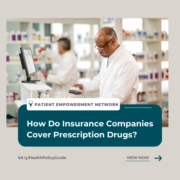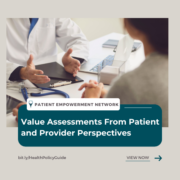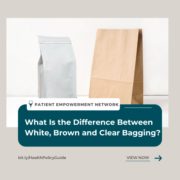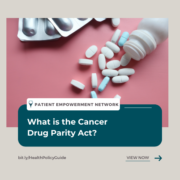How Do Insurance Companies Cover Prescription Drugs?
How Do Insurance Companies Cover Prescription Drugs? from Patient Empowerment Network on Vimeo.
Joanna Morales, Esq, CEO of Triage Cancer shares how insurance companies cover prescription drugs and discusses financial assistant programs to help with out-of-pocket costs.
See More from the Health Policy Activity Guide
Transcript
Diahanna Vallentine:
So, Joanna we’re going to talk about co-pay accumulators. Can you tell me how do insurance companies cover prescription drugs?
Joanna Morales:
Most insurance companies do provide coverage for prescription drugs, but you may still have costs that you have to pay out of pocket when you get a prescription, so first you might have to pay a deductible and that deductible could be specific to your prescription drugs, so maybe you have a $300 deductible for prescription drugs, where you have to pay that amount first before your health insurance coverage kicks in to pay for your prescription drugs, and then you might also have to pay co-payments when you go and pick up your prescription. So, if you’re going to go and pick up an antibiotic, for example, you might only have a $5 co-payment, but if you’re going to pick up a more expensive drug, you might have a $300 co-payment, and co-payments are different from co insurance and cost share amounts and those are two terms that are used in the same way. So it’s a percentage, it’s the difference between what insurance companies will pay for our medical care and what we pay, and more expensive prescription drugs, like specialty drugs, like cancer drugs, are actually paid for using that co-insurance model rather than a co-payment model.
So, an insurance company is more likely to charge you a co-insurance amount to get those more expensive drugs, so you might be paying 20% or even 30% of those drugs rather than that flat feet co-payment amount. And then you also have an out-of-pocket maximum, and that out-of-pocket maximum is a fixed dollar amount where it’s the most that you’re going to pay out of pocket for your medical expenses during the year. Some insurance companies include prescription drugs in the main out-of-pocket maximum, and some plans carve out prescription drugs and that they have their own out-of-pocket maximum. So, it’s very important for people to understand how their insurance plan treats their coverage of prescription drugs and understand what they’re going to have to pay out of pocket for their prescription drugs.
Diahanna Vallentine:
Okay, with that. So, when a person looks at the total cost of their drugs, how it’s going to work every year, so the cost, they need to take into a consideration which programs they can get grants, it’s what they considered grants?
Joanna Morales:
Yeah, so any of the potential out-of-pocket costs that someone might have to pay, there are financial assistance programs out there to help pay for those out-of-pocket costs, so some provide assistance with the co-payments, some will go towards your deductibles or even your out-of-pocket maximums, and there are lots of different types of prescription drug assistance programs, so some come from private organizations, some are specific to the cancer community, most pharmaceutical companies that make the drugs also have co-pay assistance programs. So, there are lots of places to go to look for financial assistance to help pay for those out-of-pocket costs, but what’s important to realize is that if you’re getting help paying for those out-of-pocket costs from one of those financial assistance programs, the amount of money that you’re getting assistance for to pay those costs still counts towards your deductible or your out-of-pocket maximum. So, if you have $500 in a deductible and you get $500 of financial assistance to pay that deductible, it still counts towards your deductible, so you’re not being penalized for actually getting that financial assistance, it helps towards your total out of pocket costs that you’re spending.










